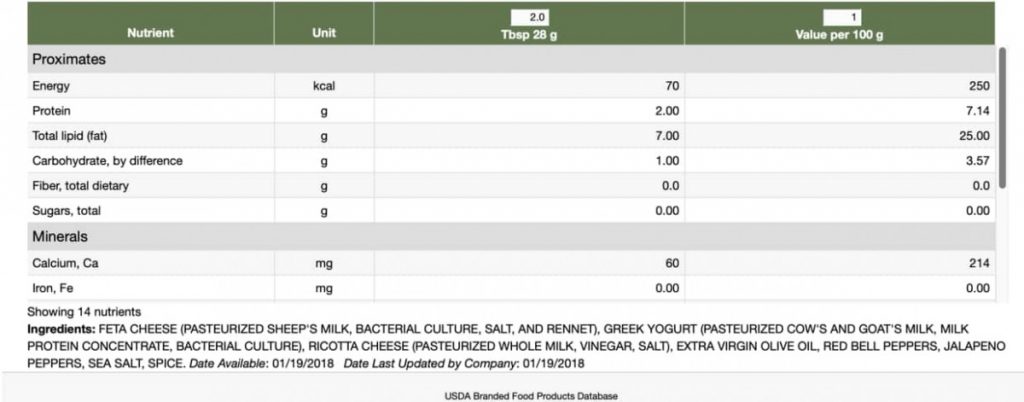Last Updated on November 5, 2022 by Aaron
Allergic to feta, but not 100% sure?
Yes, feta cheese can cause an allergy reaction. Feta is made by sheep milk, or a mixture with goat’s milk. Some producers also use cow’s milk. If you’re allergic to cow’s milk, you are very likely to allergic to goat sheep milk according to the study, and thus getting an allergic reaction from eating the feta.
Below i covered 5 reasons why you could be allergy to feta (or other cheeses).
Feta is quite similar to many other cheeses. It’s either made from 100% sheep milk, or sheep milk mixed with not more than 30% of goat milk.
Any differences? Does it have anything to do with allergy?
let’s dive in.
1. Sheep/Goat Milk in Feta
Unlike cows, sheep spent the day eating a huge variety of greens. For that reason, sheep milk has more solid content and is normally richer than both cow and goat milk.
To be exact, the milk produced has higher fat, protein, calcium and minerals than the cow or goat milk (1). That’s also why 1 gallon of cow milk or goat milk can only produce ~1 pound of cheese, but a gallon of sheep milk can make 2-3 pound of cheese.
Yet, it doesn’t have
Reason why allergic to sheep/goat milk
A certain group of people have their body immune system reacting to milk protein (casein) of sheep or goat, but may not to the cow’s milk casein. To be exact, antibody IgE recognizes the sheep casein as the foreign invasive object which then initiating the body autoimmune response (2).
That’s why some people, especially children, or even dogs might get ill with fever-like reaction and digestive problems after eating feta cheese. It can be skin inflammatory reactions in the lung, throat or face, where the area became swollen, rash or itch.
To solve that, you may want to go for dairy-free alternative to feta cheese.
2. Perhaps, Gluten?
Gluten is a group of protein that can normally be found in grains, such as wheat, rye, barley, and oats.
Although gluten do not naturally present in the milk, some processed cheese products such as mozzarella sticks, or cheese additive with added ingredients (such as vinegar or cellulose) will have a certain amount of gluten. Read more.
Your feta cheese might not be just feta in it, especially the flavoured feta.

If you allergic to gluten, make sure to check the label before you buy. Choose the feta cheese that only contain milk, starter cultures, enzyme, and salt. That’s it.
The symptoms for gluten allergy including:
- Bloating
- Diarrhea
- Abdominal pain
- Headache and feeling tired
- Weight loss
Learn more about gluten intolerance here.
3. Or the Dairy Product in general?
The reason allergic to dairy product is similar to the one I explained above for sheep/goat milk. Except for this time your IgE antibodies are sensitive to more kind of caseins (milk protein), including the cow’s. This happens to 2-3% of children in the US younger than 3 years old.
The symptoms include:
- Hives
- Vomiting
- Blood stools
- Shortness of breath
- More
If this is the case, you may want to consider stop eating dairy cheese.
Some people suggesting do a simple skin test before eating. Consider switching to
4. Could it be the Lactose in feta?
Feta containing only a little amount of lactose – less than 1g in 125g of serving size (3).
It is because of the presence of lactic acid bacteria in the feta cheese, where it converts lactose to the lactic acid. Lactic acid helps to improve gut health and nutrients absorption.
For people with lactose intolerance, their body does not produce enough enzyme to digest lactose. From mild to severe, they might show the symptoms like diarrhea, bloating, nausea, and gurgling sound in the stomach.
However, here is a good news for you y’all soft cheese lovers. The feta, camembert, and brie were all containing less than 1 g of lactose in per 100g of respective cheese (4).
According to the source, most people with lactose intolerance can tolerate up to 1-2 cups of milk which is equivalent to 24 grams of lactose daily. So, you’re “likely” to be okay.
A little note, some people believed that the “sugar” under the Nutrition Facts on the packaging label meant lactose, which is not exactly right. Lactose is one of the disaccharide sugar, but not all. It could be inclusive of other sugars, such as galactose and mono-saccharides (5,6).
For example, if the label says the sugar is 6 grams, it doesn’t necessarily mean the lactose is 6 grams.
5. Or, Histamine?
If none of it above is the cause for your feta allergy, it could be due to histamine intolerance.
As we discussed earlier here, histamine intolerance is a rare disorder that occurs in 1% of the population where it caused by lacking of certain enzymes produced in our body to digest excessive histamine.
And unfortunately, fermentation of milk product such as cheese or yogurt containing a good amount of histamine, which will cause a surge in the histamine level.
In feta, there is a considerable 4.99 mg per 100g of histamine. So, it’s not really recommended for people with histamine intolerance.
The signs and symptoms include:
- Migraines
- Nasal congestion
- Hives
- Digestive issues
- Vomiting
Learn more about histamine intolerance.


